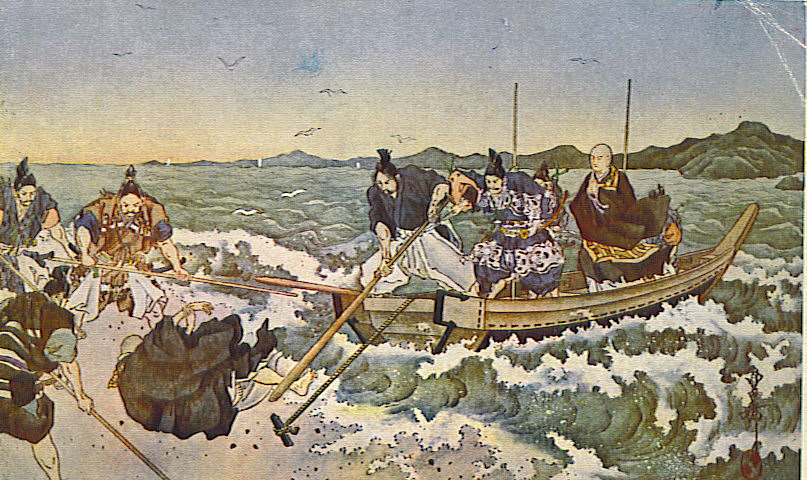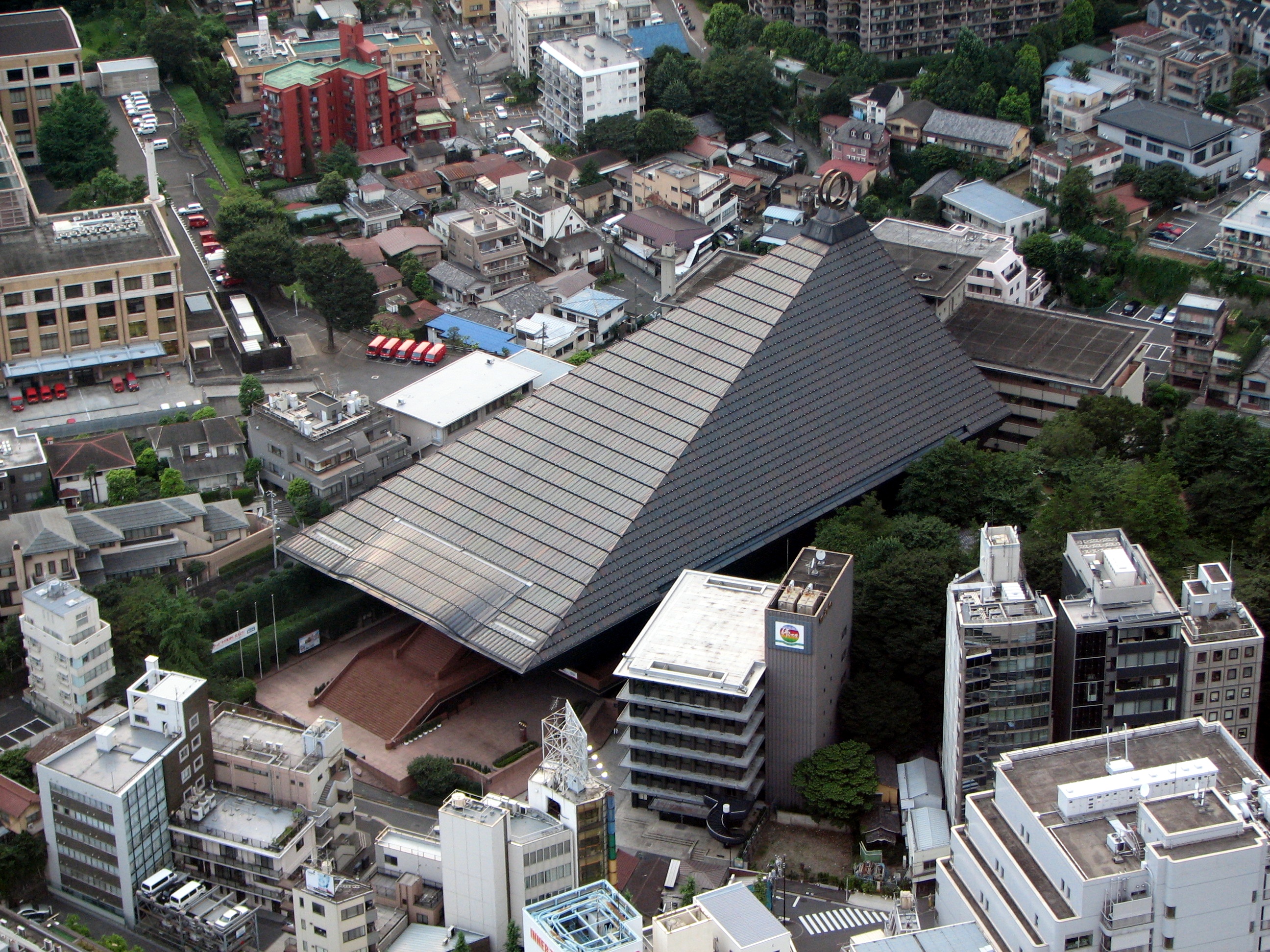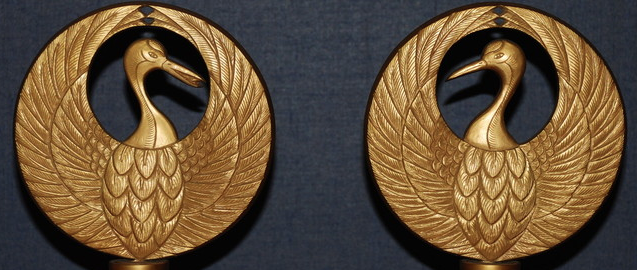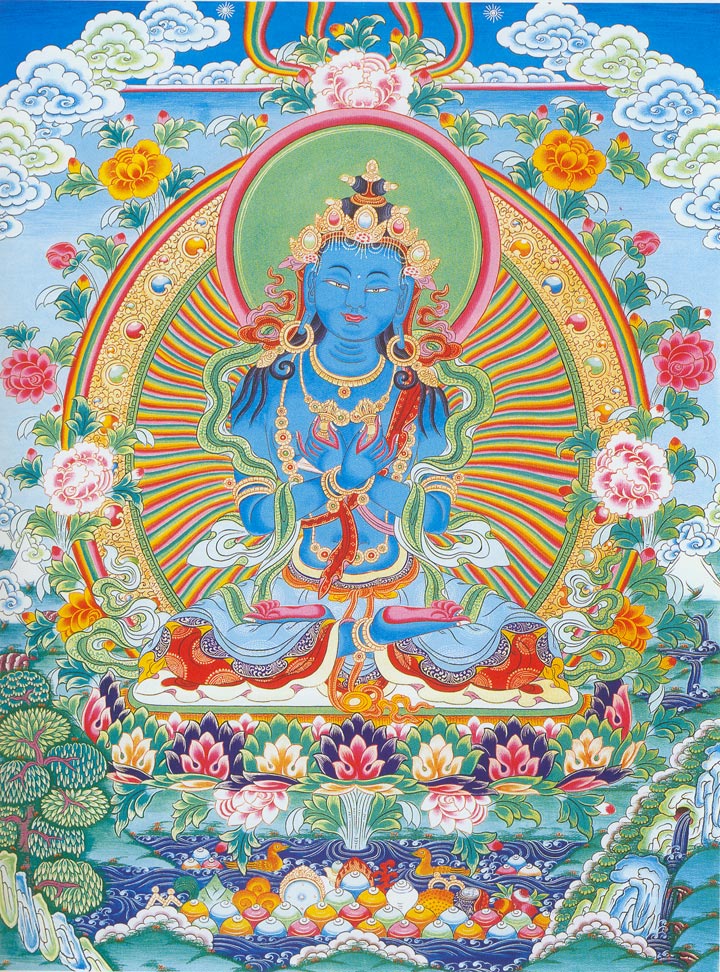|
Nichiren Buddhists
was a Japanese Buddhist priest and philosopher of the Kamakura period. His teachings form the basis of Nichiren Buddhism, a unique branch of Japanese Mahayana Buddhism based on the ''Lotus Sutra''. Nichiren declared that the ''Lotus Sutra'' alone contains the highest truth of Buddhism and that it is the only sutra suited for the Age of Dharma Decline. He insisted that the sovereign of Japan and its people should support only this form of Buddhism and eradicate all others, or they would face social collapse and environmental disasters. Nichiren advocated the faithful recitation of the title of the ''Lotus Sutra'', ''Namu Myōhō Renge Kyō'', as the only effective path to Buddhahood in this very life, a path which he saw as accessible to all people regardless of class, education or ability. Nichiren held that Shakyamuni and all other Buddhist deities were manifestations of the Original Eternal Buddha (本仏 ''Honbutsu'') of the ''Lotus Sutra'', which he equated with the ''L ... [...More Info...] [...Related Items...] OR: [Wikipedia] [Google] [Baidu] |
Awa Province (Chiba)
was a Provinces of Japan, province of Japan in the area of modern Chiba Prefecture.Louis-Frédéric, Nussbaum, Louis-Frédéric. (2005). "''Awa no Kuni''" in . It lies on the tip of the Bōsō Peninsula (房総半島), whose name takes its first ''kanji'' from the name of Awa Province and its second from Kazusa Province, Kazusa and Shimōsa Province, Shimōsa Provinces. Its abbreviated form name was or . Awa Province (Tokushima), Awa Province in Shikoku phonetically has the same name, but is written with different ''kanji'' (阿波国). Awa is classified as one of the provinces of the Tōkaidō (region), Tōkaidō. Under the ''Engishiki'' classification system, Awa was ranked as a "middle country" (中国) and a "far country" (遠国). History Awa was originally one of four districts of Japan, districts of Kazusa Province. It was well-known to the Imperial Court in Nara period Japan for its bountiful seafoods, and is mentioned in Nara period records as having supplied fish to ... [...More Info...] [...Related Items...] OR: [Wikipedia] [Google] [Baidu] |
Namu Myōhō Renge Kyō
''Namu Myōhō Renge Kyō'' (Kanji: ) is a Japanese sacred phrase chanted within all forms of Nichiren Buddhism. In English, it means "Devotion to the Mystic Dharma of the ''Lotus Flower Sutra''" or "Homage to the Sublime Dharma of the ''Lotus Sutra''". The words refer to the Japanese title of the ''Lotus Sūtra'' (Sanskrit: ''Saddharmapuṇḍarīkasūtra''). The phrase is referred to as the () or, in honorific form, () meaning ''title'', and was publicly taught by the Japanese Buddhist priest Nichiren on 28 April 1253 atop Mount Kiyosumi, now memorialized by Seichō-ji temple in Kamogawa, Chiba prefecture, Japan. In Nichiren Buddhism, the practice of prolonged Daimoku chanting is referred to as (). Nichiren Buddhist believers claim that the purpose of chanting is to reduce suffering by eradicating negative karma and all karmic retribution, while also advancing the practitioner on the path to perfect and complete awakening. History '' Lotus Sutra'' devotion had a l ... [...More Info...] [...Related Items...] OR: [Wikipedia] [Google] [Baidu] |
Reiyūkai
, or Reiyūkai Shakaden, is a Japanese Buddhist new religious movement founded in 1919 by Kakutarō Kubo (1892-1944) and Kimi Kotani (1901-1971). It is a lay organization (there are no priests) inspired by Nichiren Buddhism, but not affiliated to any particular sect. Reiyūkai considers itself the grandfather of lay-based new religions devoted to the Lotus Sutra and ancestor veneration. Reiyūkai membership currently stands at 5.14 million members, with the majority living in Japan. History In 1920s, during the crisis after the 1923 Great Kantō earthquake and the following economic depression, Kakutaro Kubo begins formulating his philosophy for what is now Reiyūkai. He compiled and published The ''Blue Sutra'' (a collection of texts from the Threefold Lotus Sutra), used by members for recitation practice. In 1930, Reiyūkai was formally inaugurated, Kakutaro Kubo became Chairman of the Board of Directors and Kimi Kotani becomes President. In 1937, headquarters were establis ... [...More Info...] [...Related Items...] OR: [Wikipedia] [Google] [Baidu] |
Risshō Kōsei Kai
; until June 1960, is a Japanese Buddhist religious movement founded in 1938 by Nikkyō Niwano and Myōkō Naganuma. Risshō Kōsei Kai is organized as a lay Buddhist movement, which branched off from the older Reiyūkai, and is primarily focused around the Lotus Sutra and veneration of ancestors. The name of the organization can be translated as "Association for Establishing the Correct nowiki/>Dharma">Dharma.html" ;"title="nowiki/>Dharma">nowiki/>Dharmaand Harmonious Achievement" or "Society for the Realization of Righteousness and Harmony." History Risshō Kōsei Kai was founded on March 5, 1938 by Nikkyō Niwano and Myōkō Naganuma, both former members of the Buddhist sect Reiyūkai. Niwano met Naganuma while he was engaged in missionary work with Reiyūkai and the two became close friends. In 1938, they attended a Reiyūkai meeting in which its president made remarks that lectures and study of the Lotus Sutra were out of date. After hearing that and consulting w ... [...More Info...] [...Related Items...] OR: [Wikipedia] [Google] [Baidu] |
Soka Gakkai
is a Japanese new religions, Japanese new religion led by Minoru Harada since December 2023 based on the teachings of the 13th-century Buddhist priest Nichiren. It claims the largest membership among Nichiren Buddhism, Nichiren Buddhist groups. The organization bases its teachings on Nichiren's interpretation of the ''Lotus Sutra'' and places chanting Namu Myōhō Renge Kyō, Nam Myōhō Renge Kyō at the center of devotional practice. The organization promotes its goals as supporting "peace, culture, and education". Soka Gakkai was founded by educators Makiguchi and Toda on 18 November 1930, and held its inaugural meeting in 1937. It was disbanded during the Second World War when much of the leadership was imprisoned for violations of the Peace Preservation Law#Public Security Preservation Law of 1925, 1925 Peace Preservation Law and charges of lèse-majesté. After the war, its expansion was led by its former third president Daisaku Ikeda. In Japan, Soka Gakkai is the head ... [...More Info...] [...Related Items...] OR: [Wikipedia] [Google] [Baidu] |
Nichiren Shōshū
is a branch of Nichiren Buddhism based on the traditionalist teachings of the 13th century Buddhism in Japan, Japanese Buddhist Bhikkhu#Monks in Japan, priest Nichiren (1222–1282), claiming him as its founder through his senior disciple Nikko Shonin (1246–1333), the founder of Taiseki-ji, Head Temple Taiseki-ji, near Mount Fuji. The lay adherents of the sect are called Hokkeko members. The Enichizan Myohoji Temple in Los Angeles, California, serves as the temple headquarters within the United States. The sect is known for vehemently rejecting the various forms of Buddhism taught by Shakyamuni Buddha as incomplete, expired and heretical for the Three Ages of Buddhism, Third Age of Buddhism. Instead, the sect is based on the exclusivist teachings of Nichiren and the chanting of "Nam-Myoho-Renge-Kyo" along with reciting curated portions of the Lotus Sutra. The object worshipped by its believers is the ''Dai Gohonzon'' while its religious symbol is the rounded crane bird. Bot ... [...More Info...] [...Related Items...] OR: [Wikipedia] [Google] [Baidu] |
Nichiren-shū
is a combination of several schools ranging from four of the original Nichiren Buddhism, Nichiren Buddhist schools that date back to Nichiren's original disciples, and part of the fifth: Overview The school is often referred to as the Minobu Sect due to its prominence within the Mount Minobu area. The school's head temple, Kuon-ji, is located on Mount Minobu where Nichiren lived in seclusion and where he asked to be buried. Another significant temple of the sect is the Ikegami Honmon-ji where Nichiren died. Accordingly, many of Nichiren's most important personal artifacts and writings, also considered to be National Treasures of Japan, are within their safekeeping. The sect is also known for its more open and tolerant views of other Buddhist traditions, even mixing or incorporating various mixed Buddhist beliefs and Shinto practices into their own aesthetics, most notably the use of various religious statues, the red stamping practice of Shuin for novelty, esoteric combinati ... [...More Info...] [...Related Items...] OR: [Wikipedia] [Google] [Baidu] |
Emperor Taishō
, posthumously honored as , was the 123rd emperor of Japan according to the traditional order of succession, reigning from 1912 until his death in 1926. His reign, known as the Taishō era, was characterized by a liberal and democratic shift in domestic political power, known as Taishō Democracy. Yoshihito also oversaw Japan during World War I, Japan's participation in the World War I, First World War from 1914 to 1918, the Spanish flu, Spanish flu pandemic, and the 1923 Great Kantō earthquake, Great Kantō earthquake of 1923. Born to Emperor Meiji and his concubine Yanagiwara Naruko, Yoshihito was proclaimed crown prince and heir apparent in 1888, his two older siblings having died in infancy. He suffered various health problems as a child, including meningitis soon after his birth. In 1900, he married Empress Teimei, Sadako Kujō, a member of the Kujō family of the Fujiwara clan; the couple had four sons. In 1912, Yoshihito became emperor upon the death of his father, but as ... [...More Info...] [...Related Items...] OR: [Wikipedia] [Google] [Baidu] |
Emperor Go-Kōgon
was the 4th of the Emperors of Northern Court during the Period of the Northern and Southern Courts. According to pre-Meiji scholars, his reign spanned the years from 1352 through 1371.Titsingh, Isaac. (1834). ''Annales des empereurs du japon'', pp. 302–309. This Nanboku-chō "sovereign" was named after his father Emperor Kōgon and ''go-'' (後), translates literally as "later;" and thus, he may be called the "Later Emperor Kōgon", or, in some older sources, may be identified as "Emperor Kōgon, the second", or as "Emperor Kōgon II." Genealogy His personal name was Iyahito (彌仁). He was the second son of the Northern Pretender Emperor Kōgon, and brother of his predecessor, Emperor Sukō. His mother was Hideko (秀子), Sanjō Kinhide's daughter *Lady-in-waiting: Hirohashi (Fujiwara) Nakako (廣橋(藤原)仲子; 1336/9-1427) later Sukenmon’in (崇賢門院), Hirohashi Kanetsuna's daughter **Second son: Imperial Prince Ohito (緒仁親王) later Emperor G ... [...More Info...] [...Related Items...] OR: [Wikipedia] [Google] [Baidu] |
Viśiṣṭacāritra
Viśiṣṭacāritra (; also known as Superior Practice) is a bodhisattva mentioned in the 15th, 21st, and 22nd chapters of the ''Lotus Sutra''. He is one of the four great perfected bodhisattvas who attends Gautama Buddha and protects the ''Lotus Sutra'' and its devotees. The other three are Anantacaritra, Visuddhacaritra, and Supratisthitacaritra; together they make up the four great primarily evolved bodhisattvas. Viśiṣṭacāritra is also believed to represent the "true self" characteristic of buddhahood, which is the selflessness of Nirvana. In Nichiren Buddhism In most schools of Nichiren Buddhism, Nichiren is believed to have fulfilled the vow of Viśiṣṭacāritra during his lifetime. This is because he revealed what he held to be the Superior Practice of chanting the title (''daimoku'') of the ''Lotus Sutra'', Namu Myōhō Renge Kyō, which would quickly allow all beings to attain enlightenment in their present lifetime, no matter what their capacities. Accord ... [...More Info...] [...Related Items...] OR: [Wikipedia] [Google] [Baidu] |
Pure Land
Pure Land is a Mahayana, Mahayana Buddhist concept referring to a transcendent realm emanated by a buddhahood, buddha or bodhisattva which has been purified by their activity and Other power, sustaining power. Pure lands are said to be places without the sufferings of Saṃsāra, samsara and to be beyond the Trailokya, three planes of existence. Many Mahayana Buddhists aspire to be reborn in a Buddha's pure land after death. The term "Pure Land" is particular to East Asian Buddhism (). In Sanskrit Buddhist literature, Sanskrit Buddhist sources, the equivalent concept is called a buddha-field () or more technically a pure buddha-field (). It is also known by the Sanskrit term (Buddha land).Keenan, John P. ''The Interpretation of the Buddha Land'', p. xiii. BDK America Inc. 2002. In Tibetan Buddhism meanwhile, the term "pure realms" ( Wylie transliteration, Wylie: ) is also used as a synonym for buddhafield. The various traditions that focus on attaining Rebirth (Buddhism), reb ... [...More Info...] [...Related Items...] OR: [Wikipedia] [Google] [Baidu] |
Adi-Buddha
The Ādi-Buddha (, Ch: 本佛, Jp: honbutsu, First Buddha, Original Buddha, or Primordial Buddha) is a Mahayana Buddhist concept referring to the most fundamental, supreme, or ancient Buddha in the cosmos. Another common term for this figure is Dharmakāya Buddha. The term emerges in Tantras (Buddhism), tantric Buddhist literature, most prominently in the Kalachakra. "Ādi" means "first", such that the Ādibuddha was the first to attain Buddhahood. "Ādi" can also mean "primordial", not referring to a person but to an innate wisdom that is present in all sentient beings. In East Asian Buddhism, the term 本佛 (běn fó, original Buddha, root Buddha) also appears in the works of Tiantai and Tendai school, referring to the original Buddha of the ''Lotus Sutra'' which was also later identified with the cosmic Buddha Vairocana, Mahavairocana. It and similar terms were also used in the traditions of Chinese Esoteric Buddhism and Shingon Buddhism, Shingon to refer to the cosmic Budd ... [...More Info...] [...Related Items...] OR: [Wikipedia] [Google] [Baidu] |





